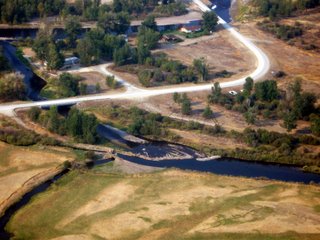
The Big Hole Watershed Committee’s chair has taken me to task for publicly criticizing the group, stating that “cooperation is the key.”
Problem is, the lock is rusty.
For many years, I avidly supported the watershed committee. Some recent failings changed my opinion.
Conrad Burns has given the group more than $1 million in earmark appropriations. Because this is our tax money, the group deserves scrutiny for how well it lives up to its public responsibilities.
In 2004, spring weather made it look as if we were in for drought. The watershed committee reacted by suspending its Drought Management Plan. “Hmmm…” I thought, “We’re in a drought. And they suspended the Drought Management Plan. What’s wrong with this picture?”
Flows at Wisdom – a critical reach for grayling – plummeted to 7 cfs, far below the 160 recommended by fisheries biologists. An entire year class of fish was lost. When the Big Hole Foundation helped secure nearly a million dollars in drought relief, flows soared over 200.
This past June – despite normal rain and snowfall to that time – flows at Wisdom dove below 30 cfs. When front page headlines brought public attention to the issue, flows recovered to about 160. (There are outstanding instances of individual ranchers cooperating with Fish, Wildlife & Parks to save grayling. Last week I was on a tour that included a large diversion near Wisdom. There was just a trickle of water, barely enough for a cow to drink. Normally, this ditch takes half the river.)
There are also problems with the waterhshed committee’s governance structure. All real power currently rests with the watershed committee’s four officers. Of these four, only one represents conservation interests. As a group that ostensibly manages a public resource important to thousands of anglers, hunters, and other recreationists, this is surely a case of “taxation without representation.”
As a group with professional staff funded by hundreds of thousands of tax dollars, the watershed committee might do better if it were more inclusive of conservation interests. Stakeholders with a critical voice – such as the Montana Wildlife Federation and the Center for Biological Diversity – have been rigorously excluded. The group’s original facilitator, Matt McKinney, says this was a big mistake. So let’s get some oil on that rusty lock, and put the cooperation-key to work.
------------------
Note regarding illegal water diversions that triggered this thread: The photo above is of a diversion dam that was greatly enlarged by a landowner who did not have the requisite "310 Permit" required by the state of Montana. This is but one example of about six such projects by various irrigators. The Beaverhead County Conservation District met yesterday and generally agreed that the example in the photo (and several others) were violations. However, the CD assessed no real penalties and will require merely that the violators reduce the size of their diversion dams.

No comments:
Post a Comment